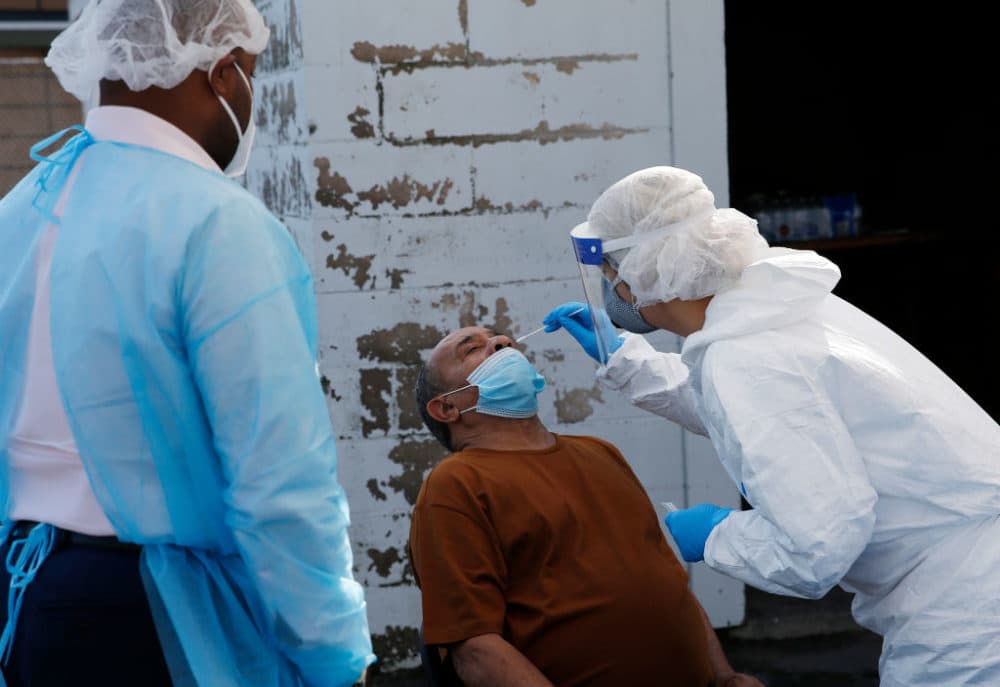Advertisement
Coronavirus Coverage
Trendline Direction Is Difference Between May, October Virus Numbers

The last time Massachusetts confirmed more than 1,000 new coronavirus infections on back-to-back days, in mid-May, conditions were improving here and Gov. Charlie Baker was beginning to reopen the economy and was reminding people to be safe when venturing out for Memorial Day weekend.
Five months later, Massachusetts is in the midst of a steady resurgence of the highly-contagious virus with 1,128 new cases of COVID-19 reported Saturday and another 1,097 new cases confirmed Sunday and the governor is urging safety for Halloween festivities.
The Department of Public Health also reported 32 recent COVID-19 deaths over the weekend, increasing the virus's death toll in Massachusetts to 9,864 people since mid-March.
The seven-day average of the positive test rate, one of the key metrics the Baker administration watches to make decisions about its economic reopening process, continued its climb over the weekend and stands now at 1.5%, up from its low point of 0.8% just more than one month ago.
When DPH last reported consecutive days with more than 1,000 new cases — May 20 and 21 -- the statistics were quite different (and the state has since made some tweaks to what and how it reports). The seven-day average positive test rate was 9.4% (down from 16.6% at the start of May), there were 2,396 people with COVID-19 hospitalized (including 647 in an ICU), and nearly 100 people were dying with COVID-19 each day.
Since then, testing has increased in Massachusetts, the public knowledge around how the coronavirus spreads has evolved, wearing a mask in public has become routine for most people, hospitals are no longer overwhelmed with COVID-19 patients and everyone has five months more experience coping with life during a global pandemic.
Advertisement
The last time Massachusetts confirmed 1,000 or more new cases on consecutive days, Baker had just announced his administration's four-phased economic reopening strategy and the feeling was generally that Massachusetts was making progress in its efforts to slow the spread of the coronavirus, treat those who were infected and track the close contacts of people who tested positive for the virus.
"People need to understand that we're playing this game, and it's a real one, with the virus and the economy at the same time," Baker said May 18. "And it's really important for people to step up and recognize and understand that this game is not over."
Now, the state has advanced about as far as its economic reopening plan allows until an effective COVID-19 treatment or vaccine is available and community-specific data determine where certain activities (like fall high school sports, indoor performances and more) must be curtailed due to local virus activity.
As of DPH's latest weekly update, there were 77 cities or towns in Massachusetts that DPH designated as being at the highest risk for COVID-19 transmission. The statewide infection rate has been climbing to the point that it would put the entire state into the highest-risk red category. After Massachusetts no longer met its own criteria for a travel exemption, DPH changed how it determined which travelers can come to the Bay State without quarantining or producing a negative test result.
The number of active cases of the highly-contagious coronavirus is at its highest point since the state began reporting that data and has been steadily climbing since the middle of the summer. Public health officials last week decided to shut down ice skating rinks statewide due to "at least 30 clusters" of infections linked to hockey games, practices and tournaments.
Earlier this month, Baker detailed the work that has gone on since the spring to shore up hospital capacity, enhance testing and contact tracing capabilities, and replenish stockpiles of personal protective equipment. He said that work has put Massachusetts in "a strong position to be prepared for whatever comes next."
"I think part of the idea today was to just make clear to people that a lot has happened over the past seven months, eight months," Baker said. "We are in a very different position with respect to our ability to test and trace and isolate quarantine, and we have far better data that we can make available to our communities and to our health care system than we could last spring, and that we've done a lot of work in particular, with the health care community and the long-term care community, to sort of make them far more robust with respect to their ability to deal with whatever might come. I think it's important to remember that we are not where we were in March."